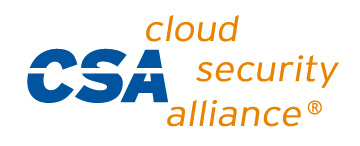
The Value of 1M Chatbot Interactions: Southwest Airlines Tells All
People crave personal connections (now more than ever) when searching for a job. A quick phone call, a handwritten note, or a thoughtful text can make the difference between an outstanding talent experience and a transactional one. The problem? Delivering this level of personalization consistently and at scale isn’t sustainable for most talent teams. But help in the form of automation and artificial intelligence (AI) is making a huge difference in conversational recruiting for the proactive companies embracing it. In particular, chatbots (those virtual assistants popping up on leading careers sites everywhere) are proving they're worth their weight in gold. Case in point: Southwest Airlines. Since implementing a recruiting chatbot to enhance their candidate experience, the company reports over 1M interactions with it. So what, you ask? This also translates to as many as 92,000 hours saved for Southwest recruiters, their team members say. Chatbots are among the most visible applications of artificial intelligence (AI) transforming the HR industry — but there are a lot of ways to boost the candidate experience. The biggest reasons Southwest wanted a chatbot on their career site are also the technology’s greatest benefits: Lead capture. “We knew that every person visiting our site was a potential candidate and employee,” Steinmann said. Even if a right-fit position wasn’t on the site at that moment, the TA team wanted to have a way to follow up when a potential job match became available. By capturing valuable candidate information and inviting them to join the Southwest Talent Community, the chatbot can help meet that goal. The chatbot collects a candidate’s name, contact info, job title, skills, years of experience, job category, and location. Site personalization and job recommendations. When it comes to the candidate experience, personalization is everything. Southwest knew that serving up relevant content is key to keeping job seekers engaged and on the career site longer. Once the chatbot gathers candidate information, it generates tailored job matches on the spot, saving candidates the hassle of sifting through superfluous opportunities — a priceless and much appreciated perk for any job seeker. 24/7 resource for FAQs. Southwest’s TA team saw the chatbot’s 24-hour ability to answer questions as a major value-add. “We had thousands of candidates visiting our career site without a really easy, clear way to find answers to their questions,” Steinmann said. “We wanted to explore if a chatbot could help candidates get the answers they needed to know if a job at Southwest could be a great fit.” Like other AI-driven technologies, the set up and “training” of a chatbot is vital to optimizing the ultimate experience it delivers to give candidates — and the value of its data for recruiters. “This is a really manual process,” O’Bryant admitted, “but it was well worth the time and effort to ensure that the chatbot was set up for success.” The team at Southwest leveraged three key steps: Building an FAQ workbook. Like many projects, this one started with a spreadsheet, O’Bryant said. Recruiters and coordinators helped generate questions for an FAQ workbook, drawing on sources like LinkedIn, interviews, and back-and-forth emails with job candidates. The recruitment marketing team then categorized the questions and wrote answers. Collaborating between teams and departments. The TA team made sure their departmental customers reviewed the accuracy of answers loaded into the chatbot. This was a major key to success, according to O’Bryant. Once the workbook was loaded into the bot, they launched a two-week testing phase. Creating a dedicated testing team. Recruiters were assigned questions to ask the chatbot and rate the answer with a thumbs-up or a thumbs-down. This feedback helped train the bot on performance on the front end, while the TA team matched answers to questions the bot couldn’t answer on the back end. Through the process, Southwest learned that a properly tuned chatbot provides value to both candidates and recruiters, Steinmann said. And their top wins illustrate the mutual benefit across both candidate and recruiter experiences: A Source of Truth for FAQs. Southwest recruiters had been spending an exorbitant amount of time answering questions from candidates about flight attendant jobs — their most coveted and competitive position. The high volume of questions still left certain asks unanswered, spurring flight attendant job seekers to create their own groups on Facebook and career forums dedicated to answering related job application questions. The TA team was thrilled that the chatbot could “create a source of truth” directly on their career site to answer questions in real time for candidates, O'Bryant revealed. Direct Applies. Approximately 28% of career site visitors who interacted with the bot clicked on a job suggested by the bot. Of those who viewed the job, 57% went on to apply. “Our chatbot didn’t just have a random effect on our hiring processes, but it really directly impacted the candidates we saw and the future employees of Southwest Airlines,” Steinmann said.
Check out key insights to chatbot success from Southwest’s Talent Acquisition Specialists Sarah Steinmann and Shannon O’Bryant — which they revealed during our virtual IAMHR conference.
Why You Need A Chatbot
3 Steps for Success: Training, Collaboration & Testing
Related Content — How to set up, train, and maintain your chatbot for amazing results
Southwest's Biggest Wins
Time Savings. As of their presentation at IAMHR, the chatbot had seen more than 1,115,000 interactions. “If we estimate that recruiters would spend one to five minutes answering each question, it means the chatbot has saved us between 18,000 and 92,000 hours,” Steinmann remarked. “Having a measurable way to give time back to recruiters proved to be a huge value-add.”
By being able to better engage and drive applies with highly motivated candidates, there's no denying the value of recruiting chatbots — and their ability to empower talent teams with something nobody can ever seem to get enough of: time for the moments that matter.
Need to see it for yourself? Grab a demo to catch Phenom’s conversational AI in action!
Get the latest talent experience insights delivered to your inbox.
Sign up to the Phenom email list for weekly updates!









